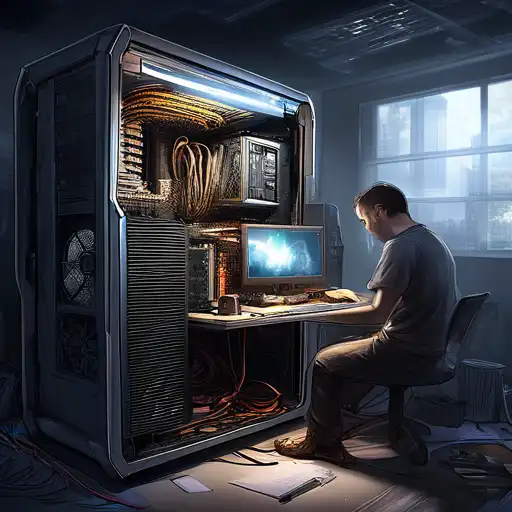Introduction to PC Building
Building your own PC can be a rewarding experience, offering both a sense of accomplishment and the opportunity to customize your computer to your exact needs. Whether you're a gamer, a content creator, or just someone looking for a powerful machine, this guide will walk you through the basics of assembling your own PC.
Understanding the Components
Before you start building, it's essential to understand the key components of a PC. Here's a quick overview:
- CPU (Central Processing Unit): The brain of your computer, responsible for executing instructions.
- Motherboard: The main circuit board that connects all components.
- RAM (Random Access Memory): Temporary storage that your CPU uses to store data actively in use.
- Storage: SSDs (Solid State Drives) and HDDs (Hard Disk Drives) store your operating system, applications, and files.
- GPU (Graphics Processing Unit): Handles rendering images, animations, and video for the computer's screen.
- PSU (Power Supply Unit): Supplies power to your computer.
- Case: Houses all your components.
Choosing the Right Parts
Selecting compatible components is crucial for a successful build. Consider your budget and what you'll be using the PC for. For gaming, invest in a powerful GPU. For tasks like video editing, prioritize a high-performance CPU and plenty of RAM.
Step-by-Step Assembly Guide
Now, let's dive into the assembly process:
- Prepare Your Workspace: Ensure you have a clean, static-free area to work in.
- Install the CPU: Carefully place the CPU into the motherboard's socket, following the manufacturer's instructions.
- Install RAM: Insert the RAM sticks into the appropriate slots on the motherboard.
- Mount the Motherboard: Secure the motherboard inside the case using the provided screws.
- Install Storage: Connect your SSD or HDD to the motherboard and power supply.
- Install the GPU: Insert the GPU into the PCIe slot on the motherboard.
- Connect the PSU: Attach the power supply to the motherboard, GPU, and storage devices.
- Cable Management: Neatly arrange cables to ensure good airflow and aesthetics.
- Power On: Connect your monitor, keyboard, and mouse, then power on your PC to test.
Installing the Operating System
Once your PC is assembled, you'll need to install an operating system. Windows and Linux are popular choices. Follow the on-screen instructions to complete the installation.
Final Thoughts
Building a PC may seem daunting at first, but with the right preparation and guidance, it's an achievable project for beginners. Not only does it allow for customization, but it also provides valuable insight into how computers work. For more tech guides and tips, check out our other articles on tech guides and DIY projects.
